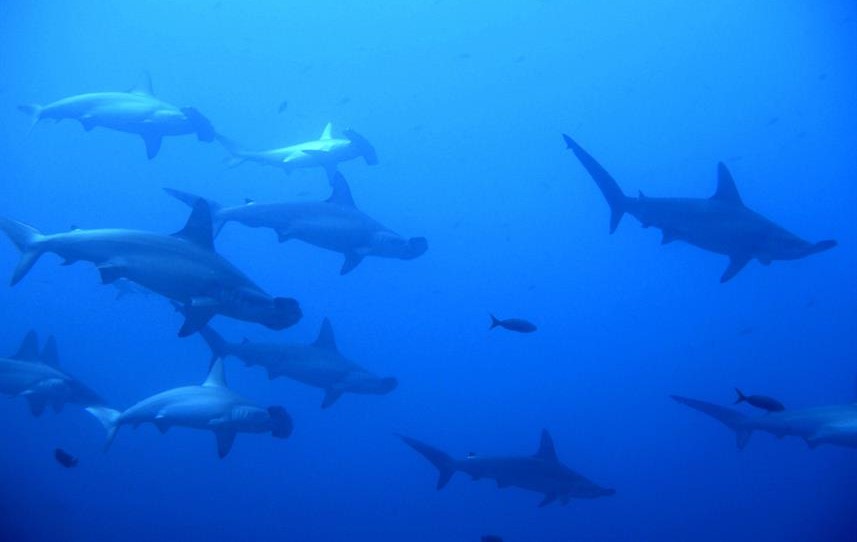
Updated January 21, 2023
This is the thirty-ninth in a series that introduces and describes the various dive services and sites for worldwide liveaboard dive safaris. This one focuses on the Socorro Islands liveaboards.
In addition to this one on liveaboards, the best worldwide dive resort locations and services are reviewed in their own series. To check them out, or other liveaboards, click on Liveaboards/Resorts on the menu at the top and choose a title from the list.
Have you ever been diving in the Socorro Islands? If so, I’d love to know about your experience. What dive shop or liveaboard did you use? Which dive spots are the best and what are the conditions there regarding the visibility, current, water temperature, sealife attractions, etc.? Please post your response in the comments section at the bottom and we’ll all learn something we can use.
Scuba Diving Soccoro Islands Liveaboards
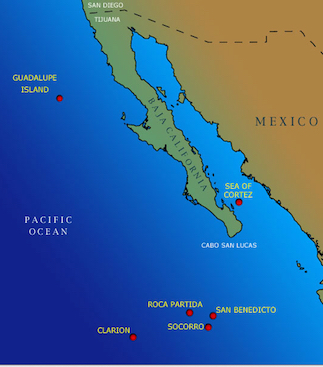 Background
Background
The four Revillagigedo Islands are located 240 miles (390 kilometers) off the tip of the Baja Peninsula to the south-southwest. Consisting of the three inner islands, San Benedicto, Roca Partida, and Socorro, and the outer island, Clarión, they are most often referred to as the Socorro Islands, named after the largest of the four. Unpopulated except for the 45 personnel at the Naval Station on Socorro Island, the east to west spread covers 420 kilometers (261 miles).
Home to many endemic animal and plant species the archipelago was declared a biosphere reserve by the Mexican government in 1994. To maintain the pristine environment, regulations do not allow the use of gloves, knives, or lights for divers, except for camera lighting. For more information on the history and ecology of the islands, please go to Wikipedia – Revillagigedo Islands.
Undersea World
The islands are volcanic in origin with ongoing geothermal activity today. There are lava tubes, steep walls, and significant current.
Divers don’t make the long journey to marvel at the relatively sparse hard corals and invertebrate life. They come for the megafauna – hammerheads and a big variety of shark species, whale sharks, manta rays, dolphins, whales, big pelagics, and humongous schools of fish.
Manta Rays: Huge specimens frequently appear at many sites like “The Boiler” on San Benedicto Island, which are cleaning stations with Clarión angelfish and barberfish to rid them of parasites. They can be remarkably fearless around divers swimming right up to and around for minutes at a time.
Humpback Whales: From January through March massive numbers of humpbacks come to the area and are often spotted from the surface and occasionally mingle with divers and snorkelers in the water.
Sharks: A tremendous variety of sharks frequent the islands. Galapagos and silky sharks appear individually or in small groups, while hammerheads often congregate in humongous shoals. The silkies often arrive in the spring along with bait balls that they feed on. Whale sharks are common in the late spring and often get up close and pretty personal with divers. Other often-seen species are oceanic whitetips, silvertips, and large numbers of resident whitetip reef sharks free-swimming or hunkered down in groups under shelves or in caverns. Occasionally even tiger sharks make an appearance.
Dolphins: Early in the year from January through March large numbers of dolphins are seen around the islands. They have grown used to boats and humans and often swim with and hang out with divers.
Seasons and Conditions
Transit time from the departure point in Cabo San Lucas through the open sea takes 26-28 hours. Seas are calmest from November to May which corresponds to the schedule of the liveaboards making the trip.
- Average daily air temperature highs reach 32°C (89°F) between June and September and dip to 28°C (83°F) between December and February.
- Water temperature can get to lows in winter of 21°C (70°F) and highs in summer of 28°C (82°F) meaning that a 5-7mm wetsuit with hood and gloves may be needed when the water is at its coolest.
- Visibility is variable based on the weather, ranging from 9 to 60 meters (30 to 200 feet). Most of the time it is in a range of 18-30 meters (60-100 feet).
- There are times and locations where the current can be strong and surface conditions rough. During the diving season from November through May, surface conditions are optimal.
There is outstanding diving in the relatively nearby Sea of Cortez and around Baja California. For my reviews of the diving there, please check these posts:
- Scuba Diving the Sea of Cortez Midriff Islands Liveaboards
- Scuba Diving Loreto Mexico
- Scuba Diving Cabo Pulmo Mexico
- Scuba Diving La Paz Mexico
- Scuba Diving Caba San Lucas Mexico
Socorro Islands Liveaboard Dive Boats
Nine great liveaboard yachts make the trip out to the Socorro Islands from November to May. Five of them extend the season one more month into June. The food, service, and facilities are excellent on all of them. Differences in size, number of cabins and guests, general roominess per guest, and pricing are all to be considered. This cruise to the Socorros is very popular and gets booked up early. I urge you to make a comparison of the basic features listed for each vessel and click on “Check the price and further details” to find out the information that is most important to you, availability, and scheduling.
All cruises depart from Cabo San Lucas, on the tip of Baja California. Transportation and lodging details regarding Cabo are after this section below.
- Length: 27 meters
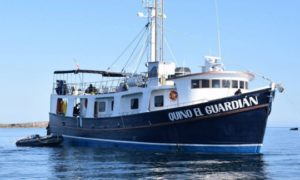
- Number of Guests: 16
- Number of Crew: 8
- Equipment: per piece to be arranged
- Nitrox: $120/trip
- Nitrox course: $245
- Single Supplement: +50%
Check the price and further details
- Length: 34 meters
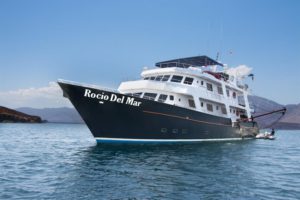
- Number of Guests: 20
- Number of Crew: 10
- En-suite bathrooms
- Equipment: per piece to be arranged
- Nitrox: $120/trip
- Nitrox course: $245
- Single Supplement: +100%
Check the price and further details
- Length: 38 meters
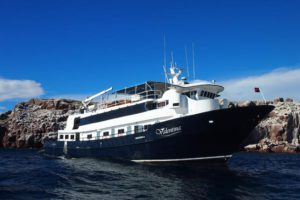
- Number of Guests: 20
- Number of Crew: unpublished
- En-suite bathrooms
- Equipment: $30/day
- Nitrox: $20/day
- Nitrox course: no
- Single Supplement: +50%
Check the price and further details
- Length: 42 meters
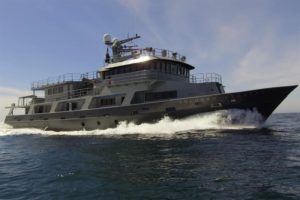
- Number of Guests: 14
- Number of Crew: unpublished
- Equipment: per piece to be arranged
- Nitrox: free
- Nitrox course: $150 (certification required)
- Helipad for emergencies
- Single Supplement: to be arranged
Special Note: Unfortunately, the Soccoro Vortex ran aground recently while on a safari to the Socorro Islands and is out of commission, perhaps permanently. No one was injured.
Check the price and further details
- Length: 34 meters

- Number of Guests: 22
- Number of Crew: 10
- En-suite bathrooms, TVs, DVD
- Equipment: per piece to be arranged
- Nitrox: $120/trip
- Nitrox course: no
- Single Supplement: +100%
Check the price and further details
- Length: 35 meters
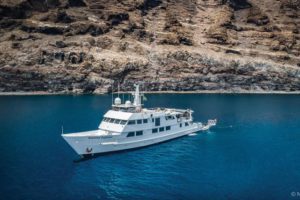
- Number of Guests: 25
- Number of Crew: 10
- En-suite bathrooms, TVs, DVD
- Sun deck with hot tub
- Equipment: $110/day
- Nitrox: $100/trip
- Nitrox course: $245
- Single Supplement: +25%
Check the price and further details
- Length: 41 meters
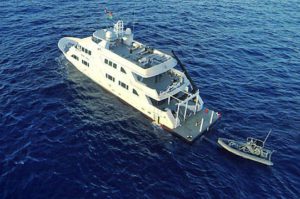
- Number of Guests: 30
- Number of Crew: 12
- En-suite bathrooms
- Equipment: $110/trip
- Nitrox: $100/trip
- Nitrox course: yes, price to be arranged
- Rebreather diving available
- Single Supplement: +25%
Check the price and further details
- Length: 32 meters

- Number of Guests: 19
- Number of Crew: 10
- En-suite bathrooms
- Equipment: $110/trip
- Nitrox: $100/trip
- Nitrox course: no
- Single Supplement: +25%
Check the price and further details
- Length: 41 meters
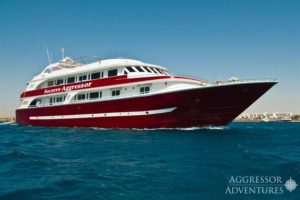
- Number of Guests: 26
- Number of Crew: unpublished
- En-suite bathrooms
- Equipment: $175/trip
- Nitrox: $120/trip
- Nitrox course: yes, price to be arranged
- Single Supplement: +65%
Check the price and further details
Cabo San Lucas Transportation, Hotels, & Diving Services
The Socorro Islands liveaboards depart from Cabo San Lucas. Below are details about how to get there, hotels, and dive shops, should you want to do some diving in Cabo.
Transportation
- Air – Flight to Los Cabos International Airport (SJD) is the most convenient way for most to get to Cabo. International flights use Terminal 1 and domestic, air taxis, and private charters use Terminal 2. The airport is 30-45 minutes from town. Buses, airport shuttles, and taxis are available for this service.
- Land – Mexico Highway 1 runs all the way from Tijuana to Cabo.
- Regional Bus service is available to connect to San Jose and La Paz.
- Taxis are available in town.
- Rental Cars – Many agencies are in operation.
- Cruise Ships anchor offshore and require a 10-15 minute boat ride into Cabo.
For further details on transportation and other tourist tips, please go to Wikitravel – Cabo San Lucas.
Hotels and Diving
There are several hundred lodging options in Cabo San Lucas starting at $15 per night.
Dozens of dive shops in the area offer a full range of services that include equipment rental, diving certification classes, dive guides, and boat tours. Many are within or associated with lodging.
The website linked below has the details and can arrange a booking for the lodging. You can easily find the location on the map provided on their site. The rates are guaranteed to be the lowest and it is free to cancel or change dates.
Photography in the Socorro Islands
With the spectacular undersea topography and fantastic marine life like hammerhead and whale sharks, manta rays, pelagics, whales, dolphins, and interesting targets from the surface, there are many excellent photo opportunities. For information and reviews of dive cameras, click here:
Scuba Diving Trip Insurance
A cushion for emergencies provides peace of mind when on vacation. I recommend this diving insurance as they have worldwide coverage and give scuba divers quality insurance and medical assistance service. Diving insurance is required on these liveaboards.
Feedback and Comments
I hope you found this post on Socorro Islands liveaboard scuba diving interesting and useful. If you have any questions or ideas, please feel free to share them in the comments section. I’d love to know of any experience you have. If there is no comments section directly below, click here: >>comments<<